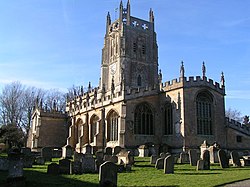Career



Buckler studied in France at the University of Paris, and at the University of Oxford in England, where on 31 March 1525 he was awarded the degree of Master of Arts. [4] He was a Fellow of Merton College, Oxford, and was appointed Canon of Cardinal College, founded in 1525 by Thomas Wolsey. After Wolsey's fall from power in 1529, Cardinal College was refounded in 1532 as King Henry VIII's College, and Buckler was again appointed Canon. On 25 June 1534 he was granted the degree of Bachelor of Divinity, although he did not take priestly orders. [5]
According to the Lisle Letters , Buckler was in Paris during the period 1534–6. When Lady Lisle determined in December 1534 to send her son, James Bassett, to school in Paris, she turned for help in supervising his care to 'John Bekinsau, Thomas Rainolde, and Walter Bucler . . . Oxford scholars . . . drawn to Paris by the reputation of its great University'. [6] Young James Bassett arrived in Paris on 13 August 1535, and stayed until 19 August 1536. After his departure, Buckler assisted Lady Lisle with other matters; on 21 August 1536 he wrote to her concerning a diamond brooch she wished to have made 'of the Assumption of Our Lady'. [7] By the spring of 1539 Buckler was in Venice, and on 28 April was the bearer of a letter from Edmund Harvel, the English ambassador in Venice, to Thomas Cromwell in England. In the letter Harvel says that he can personally speak of Buckler's 'singular goodness and humanity, and [that] all learned men here extol his erudition and wit', adding that Buckler is 'worthy Cromwell's benevolence'. [8] On 22 October 1539 Buckler was again in Paris, where John Bekinsau entrusted him with a letter to be delivered to Cromwell in England. [9] In 1542 Buckler was in Venice, and on 25 April was the bearer of a letter from Harvel to Henry VIII. [10] On 20 May 1543 Harvel wrote from Venice to Anthony Denny mentioning cramp rings sent to him by Buckler. [11]
Buckler was a known supporter of the Protestant Reformation, and in 1545 was sent on a year-long embassy to the German princes. [12] In January 1545 he and Christopher Mont were dispatched to Germany by Henry VIII, entrusted with the task of attempting to create an alliance between England, the German princes, and the King of Denmark. [13] The mission was ultimately unsuccessful, and Buckler was recalled in December 1545, although Mont remained on the continent. [14] In a letter from Strasbourg on 31 December 1545, Mont wrote that Buckler's departure was 'deplored by all Protestants and good men' there who had desired union with Henry VIII against the Pope. [15]
Buckler also served as secretary to Henry VIII's sixth wife, Catherine Parr, as a letter dated 8 August 1544 refers to him as 'Mr Buckler, the Queen's secretary'. [2] In recognition of his service to the Queen, the King granted Buckler Wye College at Wye, Kent, which had been founded in 1447 by John Kempe, Archbishop of Canterbury, and had been surrendered to the crown at the dissolution of the monasteries. Among the conditions of the grant was a stipulation that Buckler should provide for, and pay the salary of, a 'sufficient schoolmaster' for the education of the students of the college. [16] He did not retain the property for long as on 25 November 1546 he was granted licence to alienate Wye College to his brother-in-law, Maurice Denys. [17]
Buckler was knighted on 22 February 1547, two days after the coronation of King Edward VI. [18] During the young King's reign, Buckler was in Princess Elizabeth's household at Hatfield, Hertfordshire, from 1550, and at the death of Sir Henry Parker on 8 January 1552 was appointed as her chamberlain. [19] A household account book survives from 1551 to 1552 in which each page bears the signatures of Elizabeth and her chamberlain, Walter Buckler. [1] On 7 October 1552 Buckler and Sir Thomas Parry, Comptroller of the Household, wrote to Sir William Cecil requesting him to obtain letters from King Edward VI to further Elizabeth's request that John Barlow, Dean of Worcester, should grant her 'a little farm'. [20] In March 1553 the Privy Council instructed that Buckler was to be replaced as chamberlain of the Princess' household by Sir Nicholas Strange. The reason for his removal is unknown. [19]

